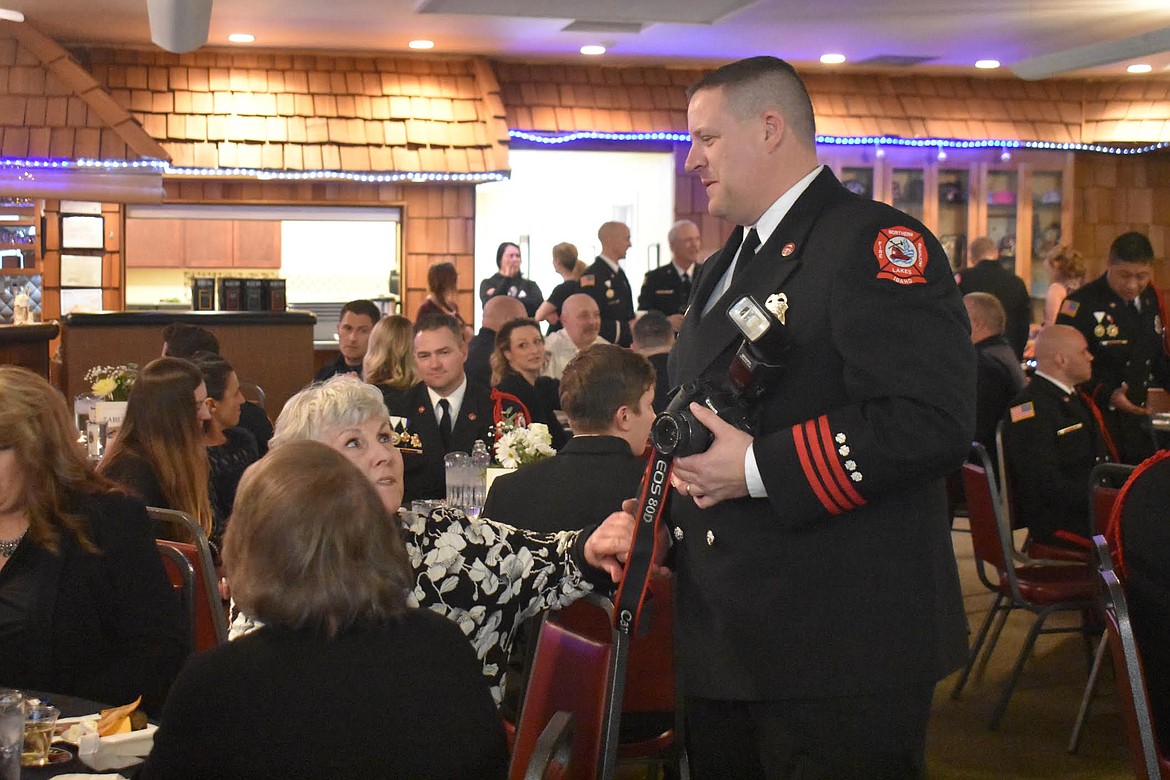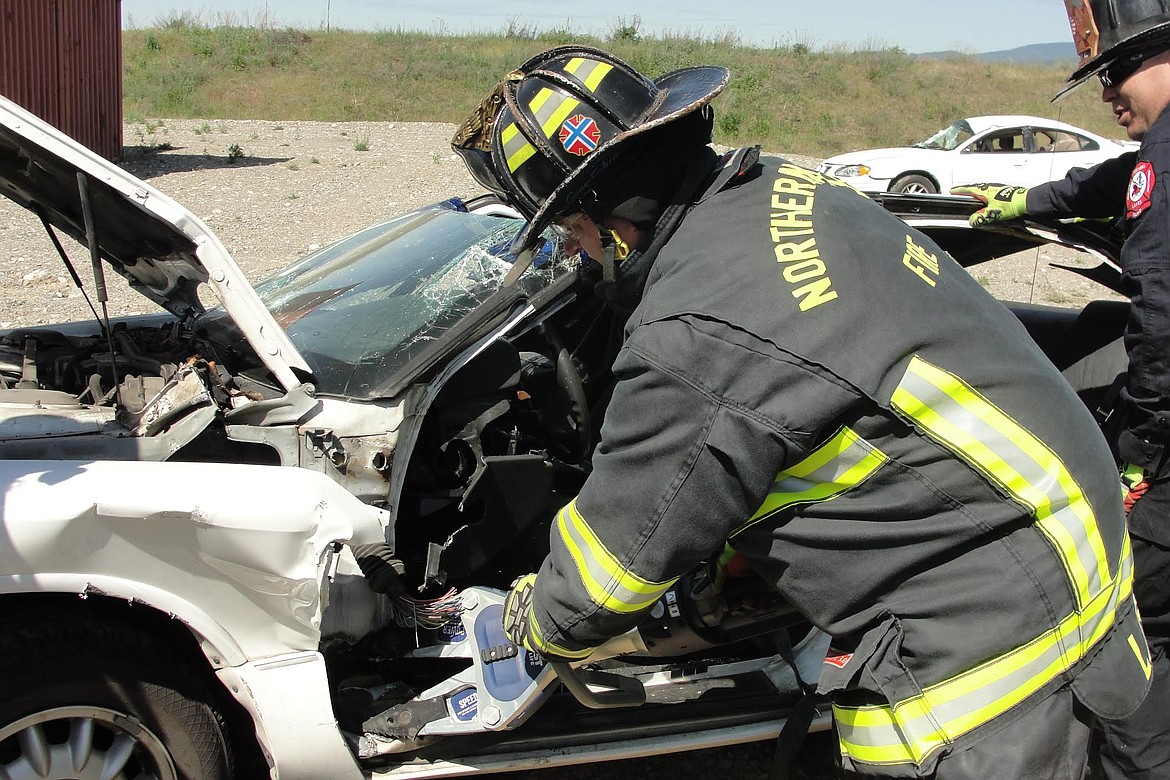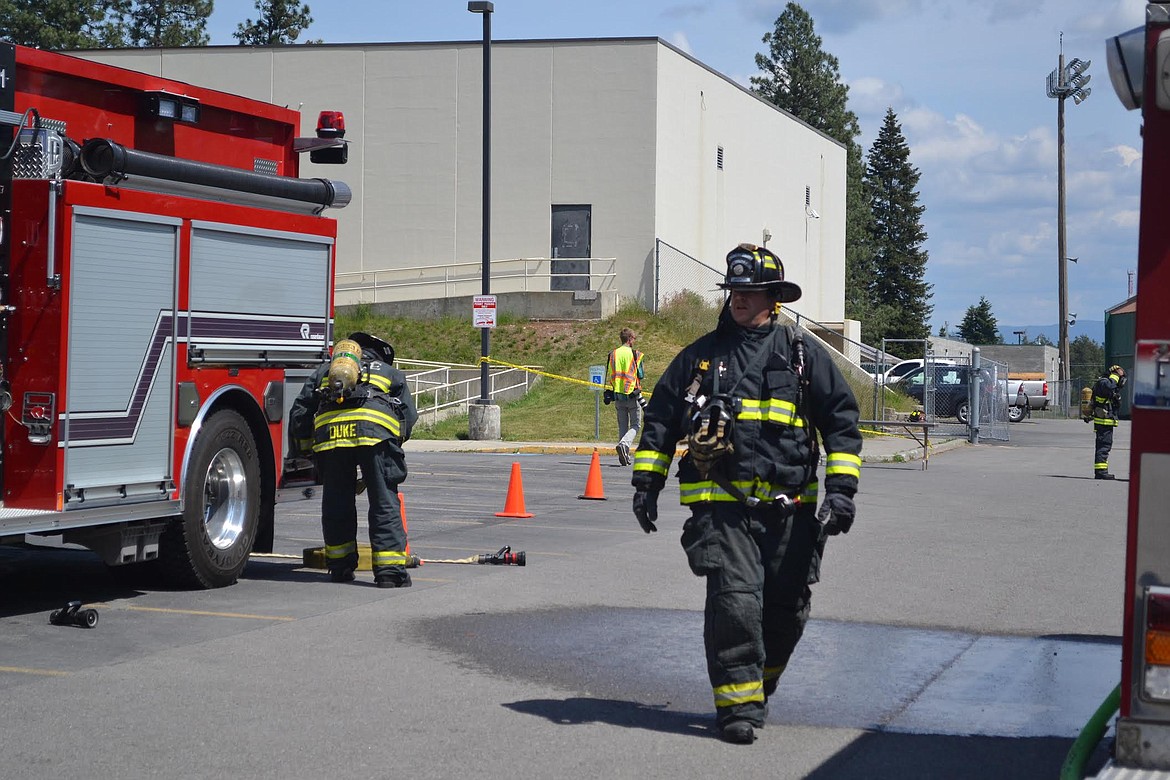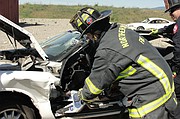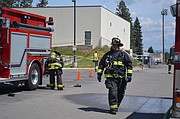Fast Five: Chris Larson, hometown hero
Meet Chris Larson, a husband, father and grandfather that has been a firefighter in Kootenai County for 24 years. He is currently the deputy fire marshal for Northern Lakes Fire District and has been with his department for 19 years.
Generation:
I’m a kid of the ‘70s to early ‘90s. Growing up in the foothills of Mount Spokane, I would spend my winters snowboarding. When I started snowboarding in 1985, snowboarding was not allowed at Mount Spokane. My older brother Todd or my father Dennis would take me to 49 Degrees North. I was the 14th certified snowboarder and had to demonstrate how to stop and turn to be on the slopes. My friends were skateboarders, but I lived on a long gravel country road; I was terrible at skateboarding. When winter came around, my parents’ sledding hill became a snowboard training ground. My friends used boards my brother Todd made The Pine Design and my 150 Burton Elite. Little did we know that we were part of the evolution of snowboarding, which would grow into an Olympic sport. Many of my friends that learned on my parents’ sledding hill continue snowboarding, and now their children shred the slopes. I would rather be knee-deep in powder or on the water. I would definitely say that I am a part of Gen X, the generation that put the X in X-Games.
Career and community involvement:
I have been in the fire service since 1996, starting out as a volunteer firefighter with Post Falls Fire, where I earned NREMT Certified First Responder and the EMT Basic. Early in 2000 I started my career as an EMT with Kootenai County EMS Service. In September of 2000, I was hired by Rathdrum Rural Fire District just before consolidation with Hayden Fire forming Northern Lakes Fire District. Becoming firefighter was a lifelong dream that came true. I was very fortunate to have Chief Jeff Welch and Deputy Chief Bob Maines as a rookie fireman. The skills they taught brought me home to my family after every shift. As a rookie, I earned EMT Advance and, in 2006, became a paramedic, wanting to deliver the highest out-of-hospital care possible, rendering care to my community. Last year I was promoted from the rank of an engineer to deputy fire marshal. My new position has been amazing spending time in schools and teaching fire prevention, fire investigations, fire inspection, public information officer and residential and commercial building permit reviews for the fire district. I am currently the treasurer for the Kootenai County Fire Prevention Co-Op and the North Idaho Code Enforcers. I am representative of the Idaho chapter of the International Association of Arson Investigators and a member of IAFF Local 4045. I volunteer with the security/medical team with Real Life Ministries and with the Wired 2 Learn Foundation. A few years ago, I was an assistant Scoutmaster with Troop 213. I also volunteered as a camp medic for RLM Kids and high school summer and winter camps.
Parental status:
My wonderful wife Angie and I will be married 25 years in July. We have two amazing children and one grandchild. My daughter Hannah is married and has a beautiful daughter Rosie. Hannah is a full-time student at North Idaho College studying American Sign Language and working toward being a school teacher. My teenage son Jake is a student at Wired 2 Learn Academy, a cadet with the CDA Civil Air Patrol and a student pilot at Latitude Aviation. Jake has paid for his lessons from working various jobs. Jake is looking forward to his first solo flight this summer. His goal is to become a commercial pilot.
1. What inspired you to become a fireman?
My Father Dennis Larson, he is a retired detective/sergeant with the Washington State Patrol. My dad is my Superman, He lives the State Patrol motto: “Service With Humility.” On May 18, 1980, when Mount St. Helens erupted, our family lived in the town of Sprague, Wash., the center of ash fall that choked the Pacific Northwest. My father was the sergeant for Lincoln and Adams counties. He spent the next few weeks rescuing stranded people on a 100-mile stretch of Interstate 90, coordinating shelter, food and medications for travelers. Like today, we spent months wearing masks protecting our lungs. My father displayed calm and reassurance, telling us he loved each one of us, as he disappeared into the cloud of ash to serve those less fortunate. A year later, I witnessed my father in action during his graduation from Eastern Washington University. He was standing in his cap and gown in the procession when a man in front of us went unconscious into a cardiac arrest. I witnessed my father immediately spring into action, performing mouth-to-mouth and chest depressions on the stranger in front of me. My career parallels my father’s from both teaching public safety, being EMTs, investigating and serving our community with joy in our hearts.
My mom Judy was my biggest cheerleader. She has a compassionate heart that demonstrates kindness. While I was in high school, my Mom, a school cook, looked out for kids that didn’t have much and would get them Christmas presents. If she thought they needed more meat on their bones, she would give them an extra helping. I watched my Mom hug kids and tell them how wonderful they are. My mom taught me to love my community.
Growing up, my dad’s friend Eric Boisen, now a retired Spokane Valley Firefighter, helped guide me in my career choice. Our families spent time together on the lake water skiing and fishing and spent winter up on the ski slopes. Eric would always answer my questions about being a fireman. I was also influenced by Bill Lawrence, now retired from both Northern Lakes and Miami-Dade fire departments. He encouraged me as a young kid working at Ziggy’s in Hayden back in 1992, a freshman in college, to become a firefighter/paramedic. Bill eventually interviewed me for my first job with KCEMSS, and then I was on shift with him at Northern Lakes before he retired. Bill is a real example of servant leadership and lifting up those around him. You never know how encouraging a younger generation to pursue a career can change a life.
I finally give a lot of credit to my wife Angie, who brought home an application for a volunteer position from Super One after being married for only one year. Angie has supported me throughout my career. If she had just walked by the posting, I would have a different life, but she inspired me to pursue my dream.
2. What is the most rewarding part of your job?
Working with the men and women at Northern Lakes Fire District. I work with amazing people who put their lives on the line to serve our citizens. We work together for a common goal to provide a safe community. They comfort families during tragedies, perform tasks under hazardous conditions and provide medical care to the sick and injured. They are problem-solvers coming from many different backgrounds, such as mechanics, framers, teachers, accountants, plumbers, business owners and combat veterans. Many are parents and grandparents. Some were raised in poverty and others in the upper-middle class. Our education ranges from GEDs to master’s degrees. Our firefighters are a snapshot of our population, representing the good in humanity, putting others first, a team with a common goal to serve our community.
3. How has the coronavirus outbreak changed life for your profession?
The firefighters on the frontline have changed how they respond to medical calls. In the past, we responded to medical scenes with a minimum of two personnel to assist the patients. Now our crews will respond to the patient with one medical personnel in full PPE, eye protection, mask, gloves and gowns. They would then request additional manpower and equipment if needed. If the patient is required to be transported the crew that first arrives will continue treatment in the back of the ambulance, transporting to Kootenai Health ER. The crews then swap out at the hospital after the ambulance has to be decontaminated. The change in operations is to reduce the exposure to possible COVID-19 to our personnel and patients. We ask that citizens wear masks if they have one before crews arrive on the scene. All patients will be placed in masks during treatment. We ask family members or others on the scene to practice social distancing. They can assist crews by giving patient history and a list of medications, if they are a caregiver or the patient can’t speak. At the beginning of each shift, our crews perform self-checks for symptoms. If personnel exhibit signs of an illness, they will be referred to the infection control officer for the Kootenai County Emergency Operation Center. Just like many members of the community, our firefighters have child care issues with school being closed, spouses that might be laid off and the added burden of the possibility of being exposed to COVID-19 and bringing it home to our family members. The operation has changed, but I couldn’t be more proud of NLFD firefighters adapting to this worldwide pandemic.
4. What is something people would be surprised to learn about you?
I have dyslexia, and it took me five times to pass college English 101. Last spring, I had successfully passed English at North Idaho College. With my learning disability, I challenged myself writing grants back in 2002 for the fire department. I was successful in six grants for over $3 million for equipment, training and the construction of Northern Lakes Fire Station 2 in Rathdrum. I’m terrified to speak in public and was in speech therapy as a child. Today I talk to thousands of students across North Idaho about fire prevention. As the public information officer for NLFD, I have given live interviews on television and media releases to the press. I refuse to be defeated by my learning disability and fear of public speaking. My success would not have been possible without the support of my parents Dennis and Judy, and my wife, Angie. Overcoming obstacles you need education and training with people lifting you up, building courage that conquers doubts.
5. What is the biggest misconception, myth or Hollywood trope about firefighters that you can dispel for us right now?
Our work environment is not a prime time TV drama mixed with romance. The firefighters I work with have strong morals and integrity. Movies and TV show the inside of a structure fire having an environment with bright flames with light smoke. Many times the actors don’t wear masks with air packs attached to their backs. The truth is, inside a structure fire is dark and you are not able to see in front of you. No one goes into the smoke and flame without wearing a mask connected to an air pack. The products of combustion are toxic. Smoke causes cancer, and if the hot gases are inhaled they will kill you. Firefighters, when searching for victims, are dependent on their sense of touch and sound and navigate a labyrinth of debris. And yes, I rescued a cat from a tree, 20 years ago! Still, the professionals are Animal Control, and we will refer animal distress calls to them.


